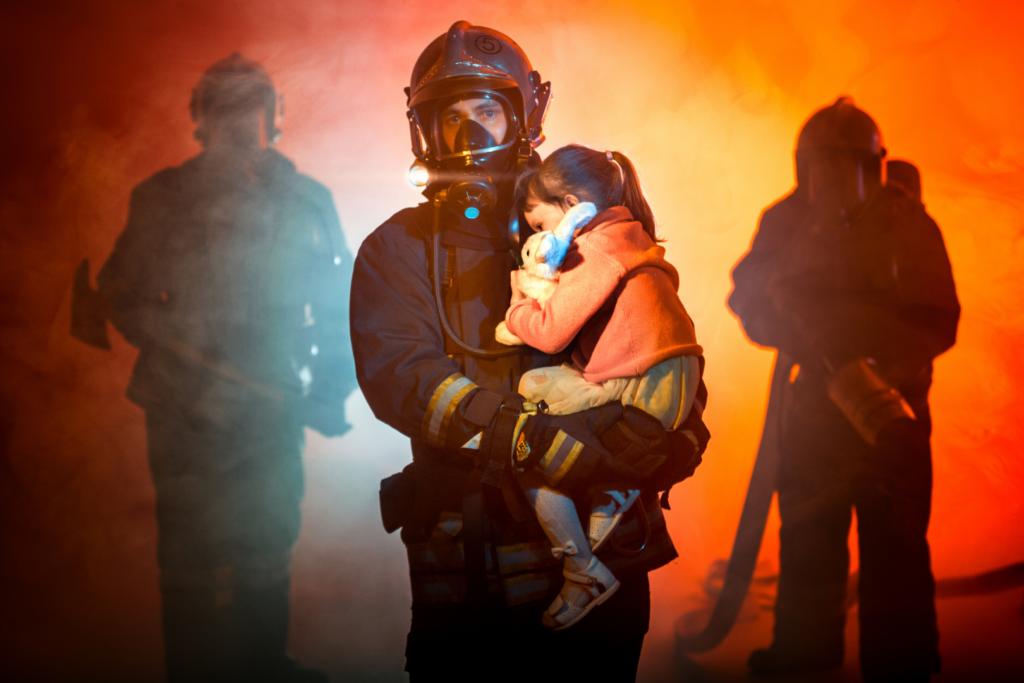Every second matters when it comes to escaping a fire safely. According to Ready.gov, a house fire becomes deadly in just 2 minutes and can spread throughout an entire house in 5 minutes! Fortunately, there are several ways you can prepare your family for a fire emergency. Here are just 2 simple steps for home fire safety that will give you an advantage during an emergency.
Step 1: Confirm Proper Fire Detection
Because fires can spread quickly, giving you little time to escape, it’s important to have adequate fire detection coverage throughout your home. There are a few types of sensors that detect household fires:
- Smoke Detectors sense smoke.
- Heat Detectors sense a rapid increase in heat or when the temperature exceeds a fixed threshold.
- Combination Detectors combine multiple technologies to sense smoke, heat, and/or carbon monoxide.
Detector Placement
Every level of your home needs at least one smoke/combination detector. Place a detector outside of sleeping areas as well as inside each bedroom. Do not place smoke detectors in kitchens or bathrooms.
Detector Connection Types
Detectors can be stand-alone or interconnected. Both are available in hardwired or wireless models. Experts recommend installing interconnected detectors. That way, when one detector goes into alarm, all the other connected detectors do, too. This allows you to hear/see the alarm no matter where you are in the house.
Alarm Monitoring Options
Stand-alone detectors are usually self-monitored, meaning only those within the house will be alerted to the alarm. Alternatively, an interconnected system can be professionally monitored. That means when there’s an alarm, the monitoring center can dispatch emergency responders on your behalf, allowing you to focus on your family’s safety. Furthermore, some interconnected detectors can be used with a mobile app that will notify you of an alarm when you’re away from home, like our Virtual Keypad app.
NWOSS offers professional installation & monitoring of home life safety systems.
Detector Testing
Once you have detectors properly placed, be sure to test them every month. Follow the manufacturer's instructions or contact your monitoring center for help. Testing only takes minutes and ensures that your life safety system is working properly. Not only will this give you peace of mind, but it will also help you avoid the dreaded incessant beep!
Avoid the frustration...
Test your life safety system monthly to make sure it's in working order!
Step 2: Create a Fire Escape Plan
- Identify two exits out of each room, including doors and windows.
- Check exits to make sure that everyone can easily open them.
- Clear objects blocking your escape routes, such as furniture.
- Confirm access to stairs or collapsible ladders at all upper floor exits.
- Designate a meeting place outside away from your home. Pick something easily identifiable at night, like a streetlight or a trusted neighbor’s home.
Share Your Fire Escape Plan
Once you've created your family's fire escape plan, write it down or draw a simple map. Store the plan somewhere easily accessible to all. Then, take time to explain the plan to every member of your household.
Practice the Fire Escape Plan
Set aside time to practice the plan together often. To help young children identify the proper exits, mark them with fun, removable stickers. Try making a game out of your practice time. Or even better, designate a family reward such as getting ice cream together after a test run. Remember, the objective of a fire escape plan is make sure that everyone feels confident they know how to respond to an emergency, not to instill fear.
For more tips on home fire safety, check out resources from the NFPA. Not only do they have detailed safety information, they also have great downloadable resources that are kid-friendly.
Still have questions? Give us a call, we're happy to help! 800-833-6416
Interested in an interconnected smoke detector system for your home?
Contact us today for a free, no-obligation quote.

